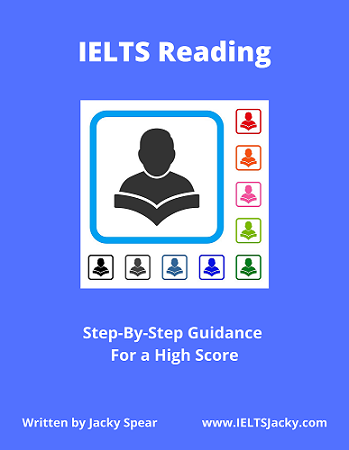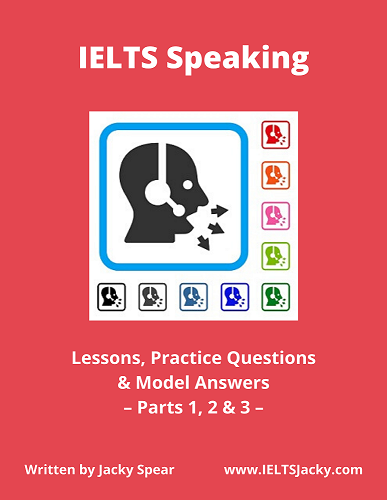How To Write an IELTS Letter
The first step to writing a high-scoring IELTS letter is to understand how to plan the letter. This is essential and in this lesson, I’m going to explain why and show you how.
The lesson includes:
- 3 reasons why you must plan your letter
- 5 simple steps of letter planning
- Understand the question
- Idea generation
- 6 part letter structure
Many students get a far lower score than they’re capable of achieving simply because they either don’t know how to plan their IELTS letter or they think that planning takes up time that is better spent writing the letter.
Here are three key reasons why you should plan.
3 Reasons why you must plan your letter
1) Planning saves you time
If you plan your letter before you start writing, you will already know what you’re going to say and won’t need to keep stopping to think about the next idea. This means that you’ll be able to write much faster than if you don’t have a plan.
You only need to spend 5 minutes on the planning stage. That leaves 15 minutes to write and check your letter.
2) Planning results in a more relevant answer
25% of your marks are for task achievement. This includes,
- Writing over 150 words.
- Stating the reason for writing your letter.
- Using the correct tone – formal or informal.
3) Planning results in a better structure
Another 25% of the marks are for coherence and cohesion. This includes,
- Having a clear structure to your letter.
- Using paragraphs.
- Using cohesive devices, e.g. next, because, if, however, also, then.
- Use referencing, e.g. ‘he’, ‘she’, ‘it, ‘they’.
To learn more about the marking criteria and how your letter will be assessed, see this lesson: IELTS Letter Writing Tips
Spending a few minutes planning before you start writing will ensure that you include everything that's required for a high mark. Your plan will give you a basic outline to follow as you write. This will make your task a lot easier and lead to a far better letter, and a happy examiner.
The 5 Simple Steps of IELTS Letter Planning
There are 5 steps to writing a good letter for General Writing Task 1:
# 1 Understand the topic
# 2 Identify who you are writing to
# 3 Identify the 3 things you must write about
# 4 Decide if the tone should be formal or informal
# 5 Generate ideas
We’ll look at these in more detail in a minute but first, I’ll quickly show you how to understand an IELTS letter question.
Understand the Question
The structure of the question will always be the same. Here’s the 3 part structure.
Part 1 – The topic.
Part 2 – The person you must write to.
Part 3 – What you should write about (listed as 3 bullet points).
And this is a typical question. I’ve used the same colour-coding to highlight the 3 different parts.
Sample question:
You have recently started working for a new company.
Write a letter to a friend. In your letter:
- Explain the reasons why you changed jobs
- Describe your new job
- Tell him/her your other news
Planning an IELTS Letter
Once you understand the structure of the question, you’ll be able to quickly and easily complete the first 3 steps of the planning process. Here they are again with detail from the question added.
# 1 Understand the topic
The first part of the question tells you the topic you must write about.
You have recently started working for a new company.
# 2 Identify who you are writing to
The second part of the question tells you who you must write to.
You are writing to a friend.
# 3 Identify the 3 things you must write about
You must include these 3 things in your letter:
Now for the
final two steps of the planning process.
# 4 Decide if the tone should be formal or informal
Next, you need to identify what tone to use in your letter. Follow this rule:
- If the question includes the word ‘friend’, use informal language.
- If the question does not include the word ‘friend’, use formal language.
The only exception is if the letter is to a close family member when you would also use an informal tone, but these are not common.
It is essential that you are able to distinguish between the two letter types as you will use different language in each style of letter.
Our sample question states that ‘You are writing to a friend’, so you must use an informal tone.
# 5 Generate ideas
The final stage of planning is to generate some ideas to include in your letter. With only 150 words to write, you won’t need many. Just make sure that you write about each bullet point and develop each idea fully.
Here are a few tips:
- For an informal letter, imagine that you are writing to a real named friend of yours.
Your language will flow more naturally if you imagine this as a real letter to a specific friend. Use their name in the greeting.
- Write about a personal experience if possible.
If you have experienced a similar situation to the one you have to write about, use this for your ideas. It will make planning quicker and, again, help you to use natural language.
- You get marks for relevant ideas, not clever ideas.
Your ideas do not have to be the best you can possibly think of. They just need to relate directly to the bullet points. Go with your first thoughts and don’t waste time trying to think of better ideas.
So, let’s have a go at generating some ideas for our sample question. Note your ideas beside each bullet point on the exam paper, like this:
- Explain the reasons why you changed jobs
Bored with job as medical centre receptionist. New challenge. Not stuck in office all day.
- Describe your new job
Estate agent. Showing clients around houses. Varied work.
- Tell him/her your other news
Still enjoying rowing. Rowed in the county championships – second.
And that’s our planning done. We’re now ready to start writing our IELTS letter. I have an easy to learn 6 part structure for you to use which you can see below.
Once you’ve read through it, go to the step-by-step lessons listed in the menu at the bottom of the page to learn how to write letters for real sample questions.
The Simple 6 Part Structure
You can use the same basic structure for answering any IELTS letter question. Ideally, your letter should consist of 4 paragraphs with a greeting at the beginning and a signoff at the end.
1) Dear .....
2) Paragraph 1: Purpose – why you are writing
3) Paragraph 2: Write about 1st bullet point
4) Paragraph 3: Write about 2nd bullet point
5) Paragraph 4: Write about 3rd bullet point
6) Signoff
Although it is usually appropriate to write about the bullet points in order, it’s fine to change the order to make your letter more coherent and the ‘story’ flow better.
With only 20 minutes allowed for the task and a requirement of just 150 words, you won’t be able to include much detail.
The main paragraphs (2, 3 and 4) only need to be around 50 words each. Aim for quality in your letter, not quantity – the right information written in a logical order. Having a structure to work with will help you achieve this.
Now study the lessons below as I show you step-by-step how to write a high-scoring letter on each of the 7 IELTS letter topics. There are also additional lessons on writing formal and informal letters.
To see a model answer for the sample question used on this page, click this link:
How To Write an Informal Letter
|
Want to watch and listen? Click on this video. |
Like this page?
IELTS General Writing Task 1 – All Lessons
IELTS General Writing – A summary of the test including important facts, test format & assessment.
Letter
Format – The format, the 7 topics, letter
structure, formal & informal, assessment & marking criteria, sample
questions. Essential information you need to know.
Letter Writing Tips – Learn top tips on how to meet the assessment and marking criteria and achieve a high score.
Letter Writing Structure – Find out how to use this easy to learn letter structure to write a high-scoring letter. Includes a model answer.
How To Plan a Letter – Learn a simple 5 step process & 6 part letter structure. Also, help to understand the question & generate ideas.
Formal or Informal – How to decide what type of
letter to write. Sample questions & 2 model letters.
Letter Writing Vocabulary – Learn useful phrases to help you achieve a high score. Also, know how to start & end your letter.
How To Write an Informal Letter – Step-by-step instructions, simple 4 step plan & 6 part letter structure, model letter.
How To Write a Formal Letter – Step-by-step instructions, simple 4 step plan & 6 part letter structure, model letter.
Letter Topics – Learn the 7 most common letter topics & other popular subjects. Includes 20 sample questions.







